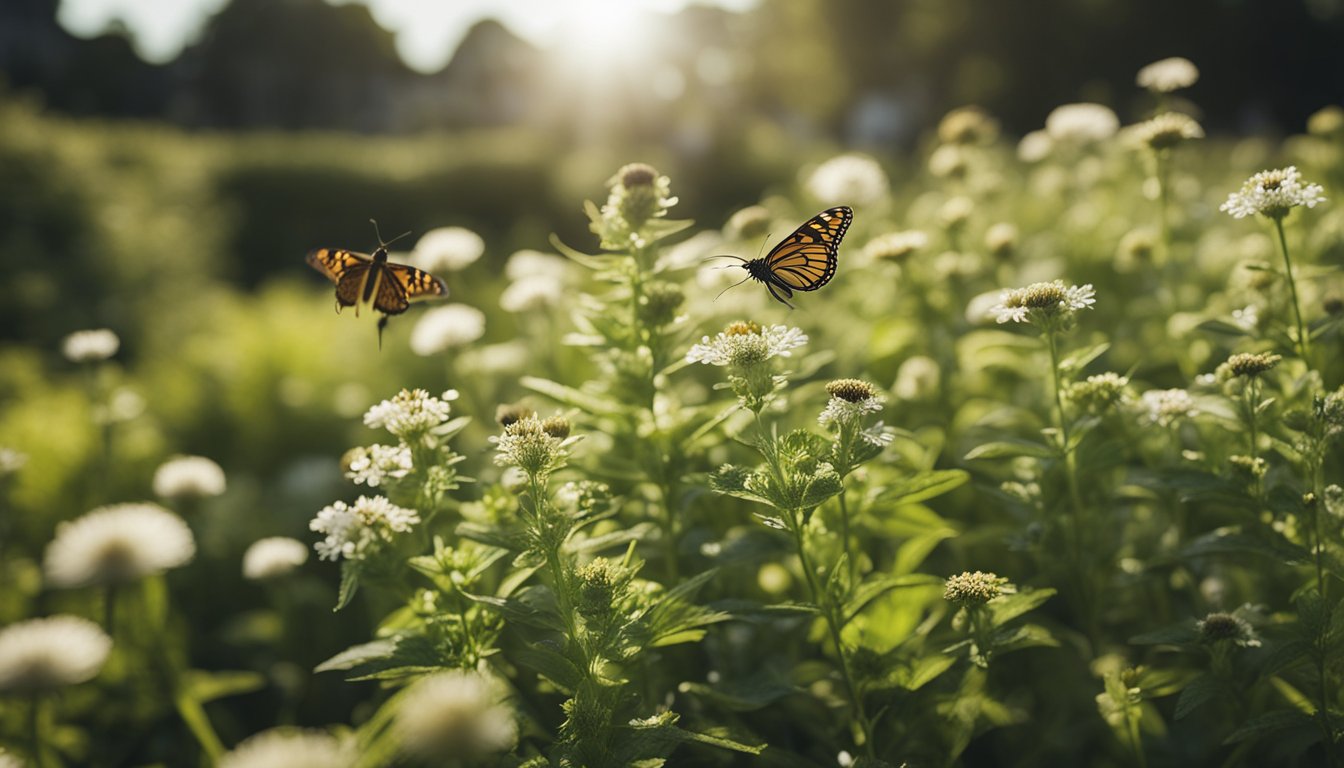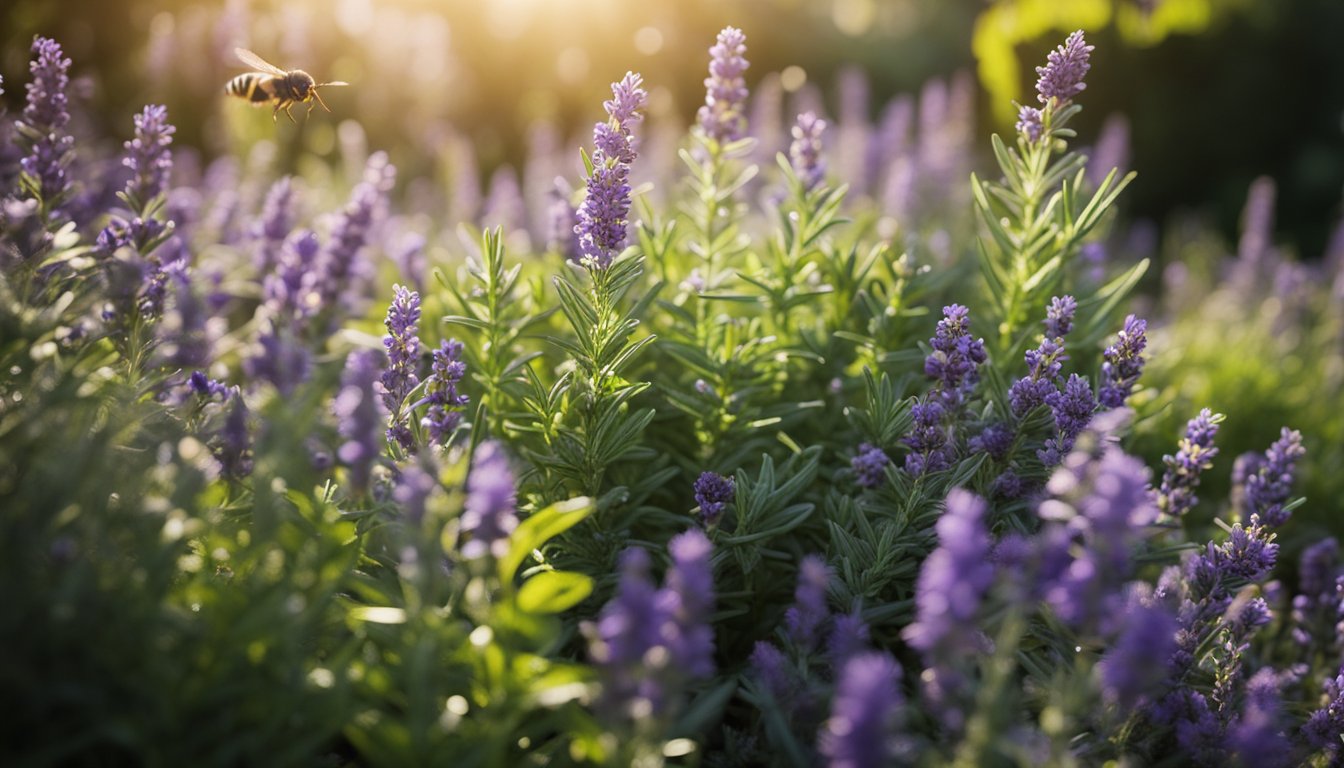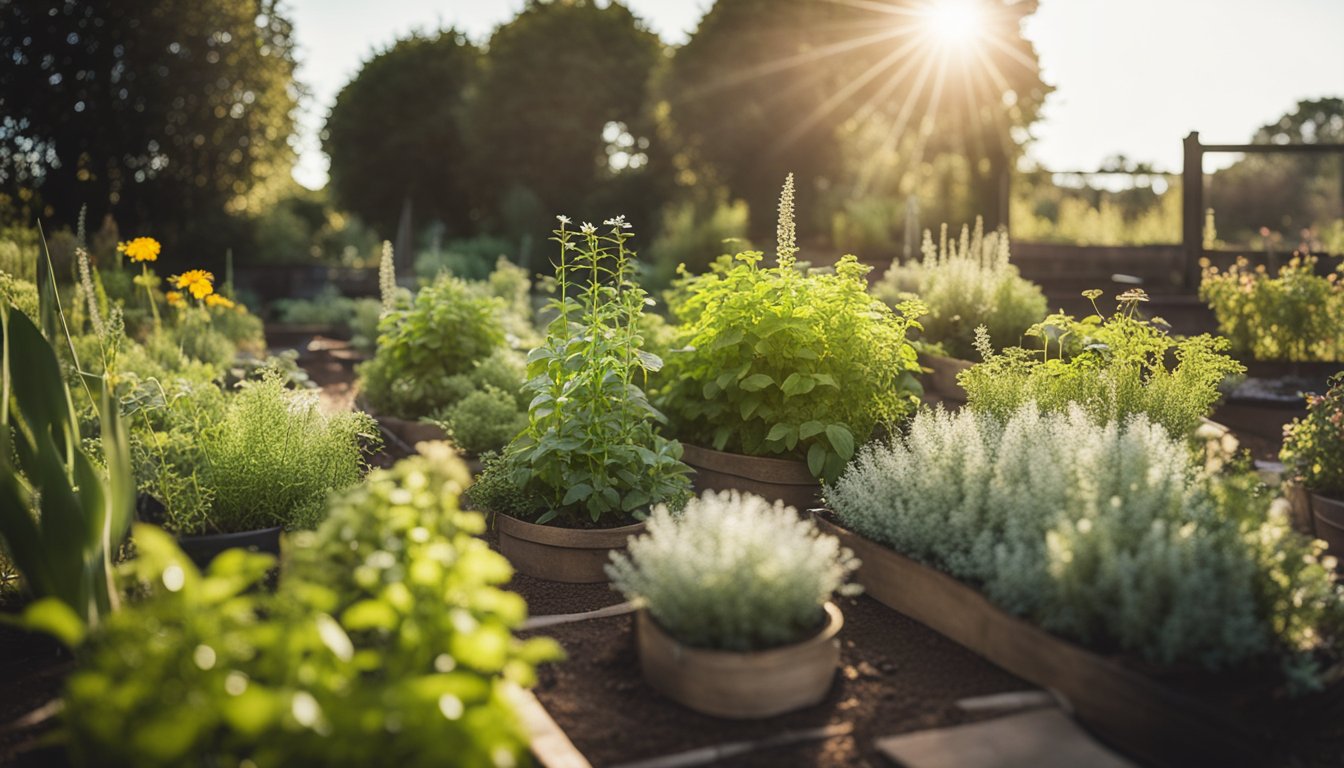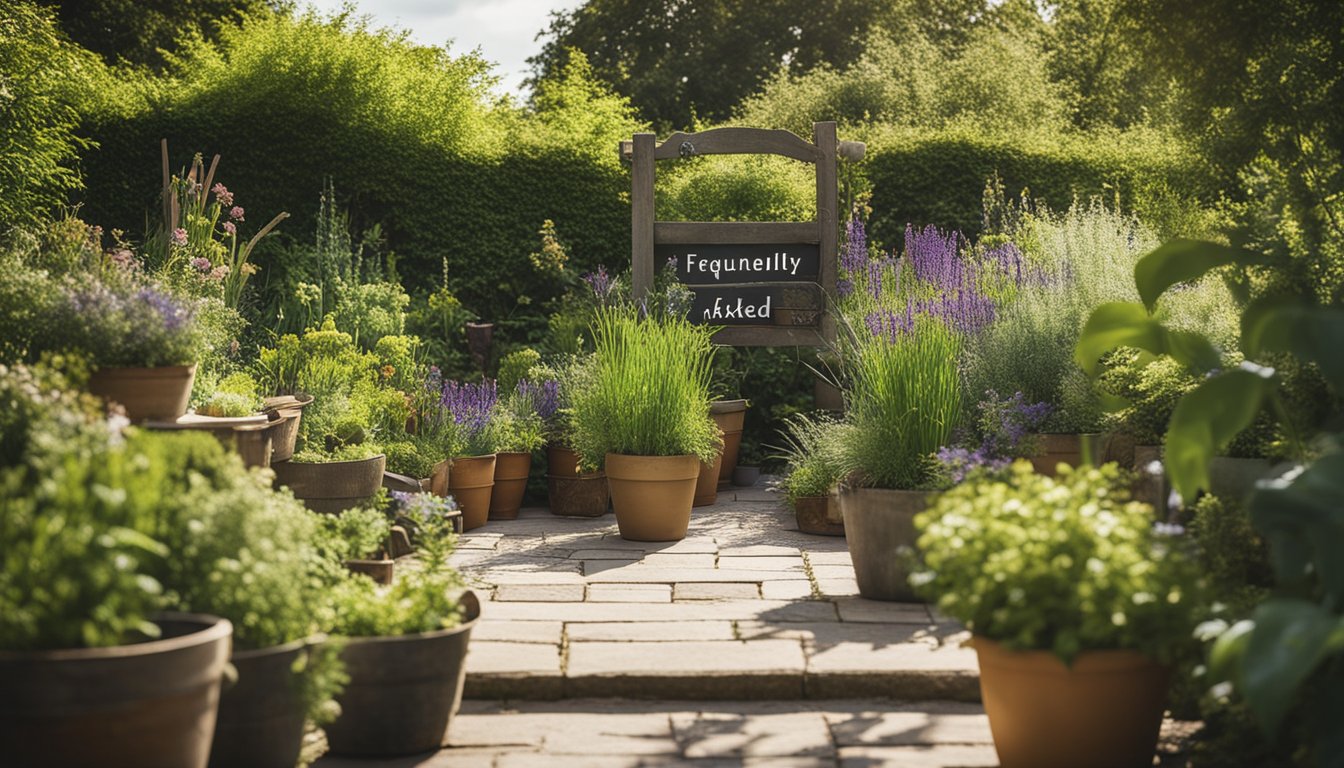Late updated: 16 Apr 2025 11:04
Written by: Emily Thornton
Creating A Thriving Herb Garden With Native UK Plants: A Comprehensive Guide
Creating a thriving herb garden with native UK plants not only provides aromatic and flavourful additions to our meals but also offers a sustainable and wildlife-friendly environment. By choosing native herbs such as thyme, rosemary, and mint, we can create a resilient and low-maintenance garden that suits the UK climate. Whether we opt to grow herbs in pots on a sunny patio or establish a dedicated herb garden in a backyard, selecting the right location is key to their success.

Understanding the preferences of each herb, such as sunlight exposure and soil drainage, allows us to cultivate a flourishing herb garden. Thyme and oregano prefer well-draining soil, while mint thrives in moister conditions. These cherished perennials and annuals can be seamlessly integrated into existing gardens, providing both beauty and utility.
In addition to their culinary and visual appeal, native UK herbs attract pollinators, creating a vibrant hub of biodiversity. This makes our gardens not only a source of fresh ingredients but also a haven for essential wildlife. Let's embark on nurturing a remarkable herb space that will delight us for seasons to come.
Key Takeaways
- Choose native herbs for a resilient UK garden.
- Understand herb preferences for optimal growth.
- Attract wildlife by cultivating native varieties.
Selecting the Right Herbs for Your UK Garden

Choosing the best herbs for a UK garden involves understanding climate adaptability, seasonal planting, and microclimate utilisation. Identifying which herbs grow best in local conditions helps enhance a garden's productivity and longevity.
Understanding Native and Adaptable Varieties
Selecting herbs native to the UK or those well-adapted to its climate ensures success. For example, sage, chives, and parsley thrive in cooler climates. These hardy herbs provide fresh produce and aromatic flavourings.
Additionally, herbs like rosemary and thyme are evergreen, offering year-round foliage and culinary versatility. Native and adaptable herbs require less intervention, making them ideal for gardeners seeking low-maintenance options. These varieties often resist local pests and diseases better, contributing to healthier growth and better yields.
Importance of Seasonal Cycles for Planting
Recognising and leveraging seasonal cycles is crucial for successful herb growth. For instance, basil and dill prefer the warmth of summer, while cilantro, and parsley flourish in spring and autumn's cooler temperaments.
Planting herbs during optimal seasons not only enhances growth but ensures the availability of fresh herbs for culinary dishes throughout the year. Monitoring local frost dates helps in planning sowing and harvesting, which protects tender herbs from extreme conditions and maximises their potential.
Creating Microclimates for Mediterranean Herbs
Some Mediterranean herbs, such as lavender, oregano, and marjoram, require specific conditions to thrive in the UK. By creating microclimates—small areas that mimic their native environments—we can ensure their health and productivity.
Planting against a south-facing wall can provide the warmth and drainage that Mediterranean herbs need. Alternatively, growing in containers allows us to move these herbs through seasonal changes. Raised beds can also improve drainage, crucial for herbs that prefer drier conditions. Thoughtful design can turn an average garden into a thriving space for diverse herbal delights, making it possible to enjoy both variety and abundance.
Cultivation and Care for a Flourishing Herb Garden

Creating a flourishing herb garden requires attention to soil preparation, water management, and maintenance techniques. Each of these factors plays a crucial role in ensuring that herbs thrive, whether planted in garden borders, patio containers, or on a windowsill.
Soil Preparation and Planting Techniques
To begin, well-drained soil enriched with organic matter is essential for most herb varieties. We should remove perennial weeds and loosen the soil to improve its texture. A planting hole should be made for each herb, ensuring adequate space for root growth. Herbs like thyme, rosemary, and oregano thrive in deep pots with proper drainage holes.
It's crucial to consider the light requirements. Some herbs, such as cilantro and lemon verbena, prefer partial shade. Meanwhile, herbs with colourful foliage can enhance the appearance of garden borders or herbaceous edges.
Efficient Water and Nutrition Management
Our herbs need a consistent watering routine, especially after planting. Patio containers and window boxes might require more frequent watering than garden plots due to rapid moisture loss.
We can use a liquid fertiliser to deliver additional nutrients, promoting vigorous growth. It's advantageous to feed herbs in spring when growth begins in earnest. Be attentive to signs of over-watering or under-nourishment. Plants showing yellowing leaves might be over-watered, while those with stunted growth may lack nutrients.
Practical Tips for Herb Propagation and Maintenance
Propagation allows us to expand our herb garden inexpensively. Cuttings from plants like rosemary or salad burnet can be rooted in water or directly in the soil. Maintaining a careful balance of moisture is critical when propagating. When herbs outgrow their containers or suffer from nutrient deficiencies, re-potting becomes necessary.
For herbs that spread quickly, such as mint, consider planting them in isolated pots to prevent invasion into other areas of the garden. Regular trimming and deadheading not only maintain the garden's appearance but also encourage bushier growth. Always ensure sharp tools are used for cutting to prevent damage.
Frequently Asked Questions

When planning a native herb garden in the UK, selecting hardy culinary herbs is essential. Understanding suitable planting times and effective garden layouts can maximise growth and resilience.
What are the best herbs to grow in the UK for culinary use?
In the UK, herbs like thyme, rosemary, oregano, and mint are excellent choices for culinary use. These herbs thrive in British soil and climate. They add flavour to a wide range of dishes and are often used fresh or dried.
How do I start an outdoor herb garden as a beginner?
Begin by choosing a sunny spot with good drainage. Use containers or raised beds if space is limited. Start with easy-to-grow herbs such as parsley and chives. Water them regularly and ensure they receive adequate sunlight.
Which pots are ideal for growing herbs outdoors?
Terracotta pots are great for outdoor herbs, providing good drainage and durability. Pots should have drainage holes to prevent waterlogging. Choose sizes appropriate to the herb's growth potential, ensuring there's enough space for root expansion.
What layout maximises the growth of a herb garden?
Position herbs with similar sunlight and water needs together. Tall herbs like rosemary can serve as a backdrop, while smaller herbs like basil can be placed in the front. This prevents overshadowing and competition for resources.
When is the optimal time to plant herbs outdoors in the UK?
The best time to plant herbs outdoors is in the spring after the last frost. This allows herbs to establish as the weather warms. For some hardy varieties like mint, late autumn planting can work, offering a head start come spring.
How can I ensure a perennial herb garden thrives in British climate?
To ensure thriving perennials, such as sage and lavender, protect them from extreme cold with mulch. Ensure proper drainage to prevent root rot. During the winter, consider bringing more tender herbs indoors or providing frost protection.
